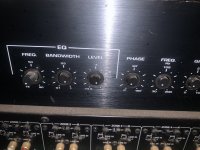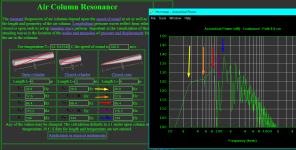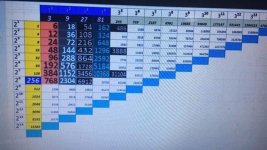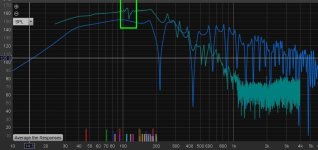it still rings at the ‘3/4’ resonace. It’s still intersting to investigate how these function and understand how to design and construct them using horn response details (not just frequency response) to consider issues to avoid and why. This stuff is exciting!
Why don’t you just turn off the crossover and play test tones surrounding that frequency and see what you hear ? Maybe your very small exit, crossover settings and low volume prevents this from being audible(which woukd be great info and very good to know after you recognize the resonance ). I don’t have such a small exit on my TQWT s…
Last edited:
My exits are at least 1/3 of Sd.Why don’t you just turn off the crossover and play test tones surrounding that frequency and see what you hear ? Maybe your very small exit, crossover settings and low volume prevents this from being audible(which woukd be great info and very good to know after you recognize the resonance ). I don’t have such a small exit on my TQWT s…
Any ratio above 3:1 is small.
I do run 120hz low pass in my car, but at -24dB...-12db from the head unit and -12db at the sub amp.
In the house, the T-TQWT is running these settings...
https://www.szynalski.com/tone-gene...T4Lp3HhGCWFiG_7VEobjsjyqIHDOZ0nEtgtTZiHweVXFQ
I think we have the same subwoofer amp and favorite type of subwoofer🤓
I think we have the same subwoofer amp and favorite type of subwoofer🤓
Attachments
Gezzzz, this is starting to sound like the adult daycare home talk 🤣
(Bring a case of adult diapers please )🤣
(Bring a case of adult diapers please )🤣
Don't you guys know, this has to do with tuning of instruments then and now. Mostly bullsh!t. Someone said 432 sounds better than 440 Hz. I don't have a frequency counter in my head so hard to tell which is which.What does 440/432hz have to do with it? 🙈😝
It’s easy to remember those numbers so I use it to ‘design’ qw resonators. But the sacred geometry/numerology rabbit hole is for the skitzophrenic🫡
set the speed of sound to 345.6m/sec in horn response and (the radius of the sun 432,000 miLes 🤡) 43.2 hz is 2 meters.
set the speed of sound to 345.6m/sec in horn response and (the radius of the sun 432,000 miLes 🤡) 43.2 hz is 2 meters.
Attachments
Last edited:
Okay so now that we know the diameter of the sun and that 43.3 Hz in air at sea level is two metres, what is next?
The moon is 2160 miles acRoss (400:1) and the sun is 400 times farther away …. Hence the ‘perfect’ solar eclipse
Another golden ratio is an elephants weeny is 4 times shorter than its trunk at sea level in the shadow and 20 degrees centigrade.
I have thecsame issue in cold water at sea level 😝
- Home
- Loudspeakers
- Subwoofers
- Maximizing cabinet efficiency



